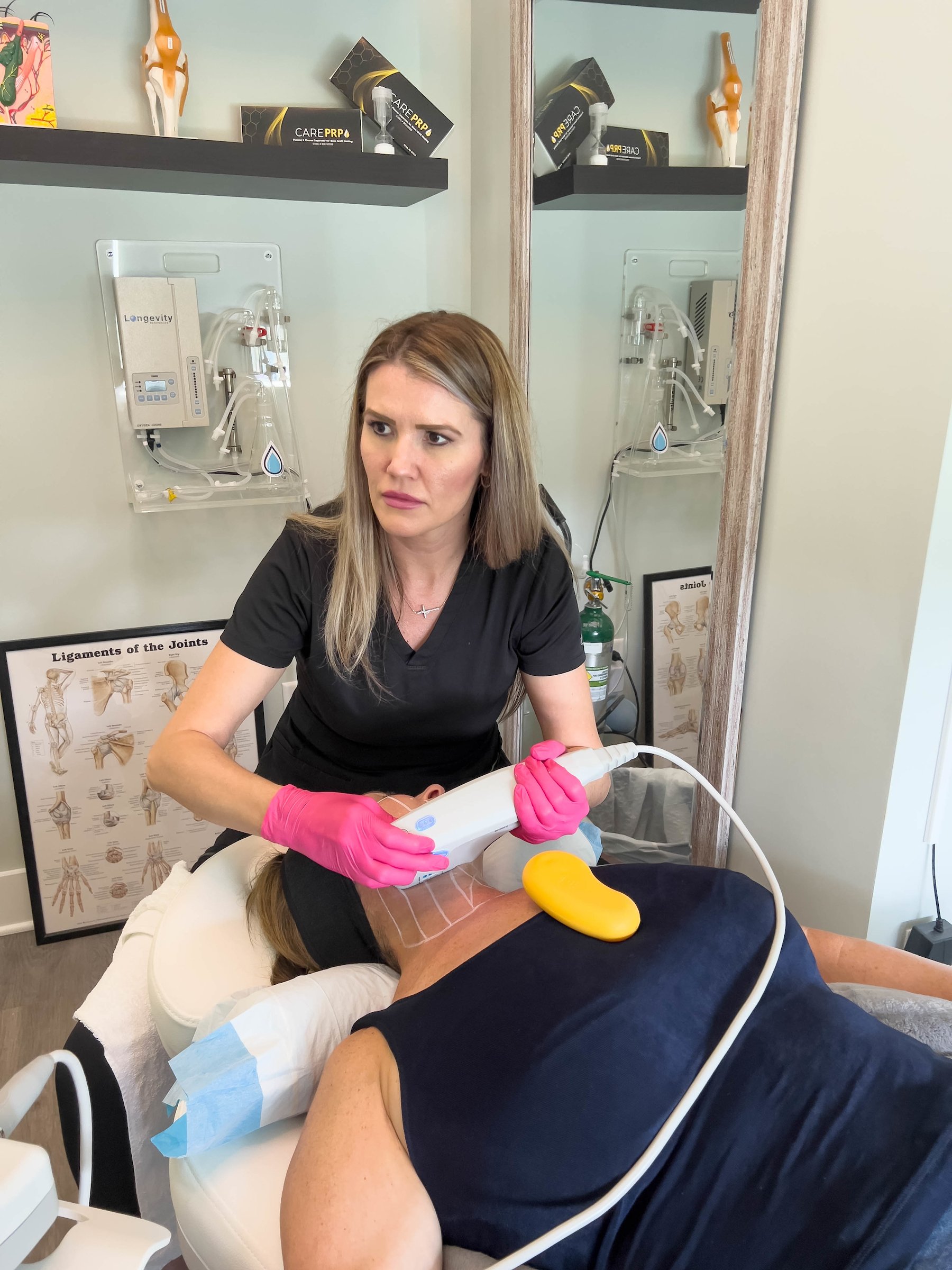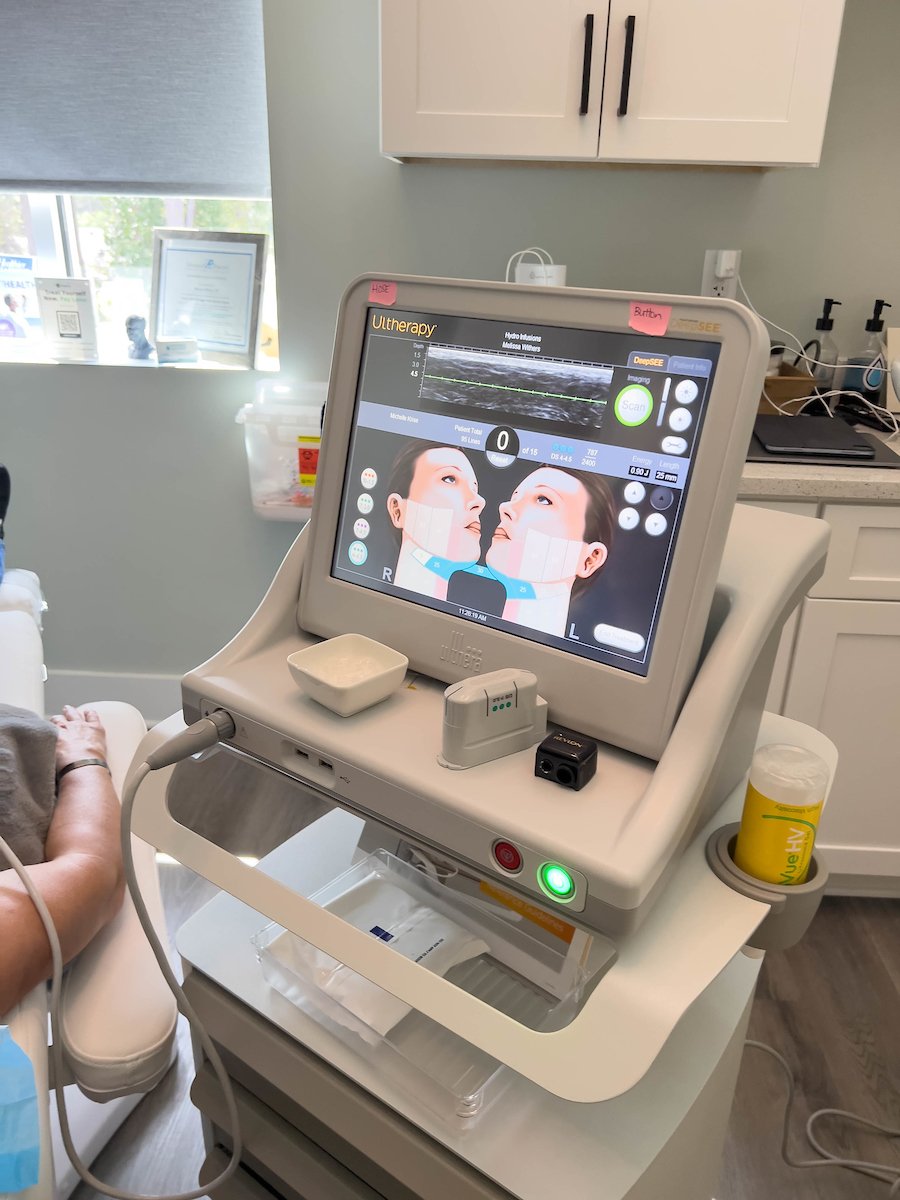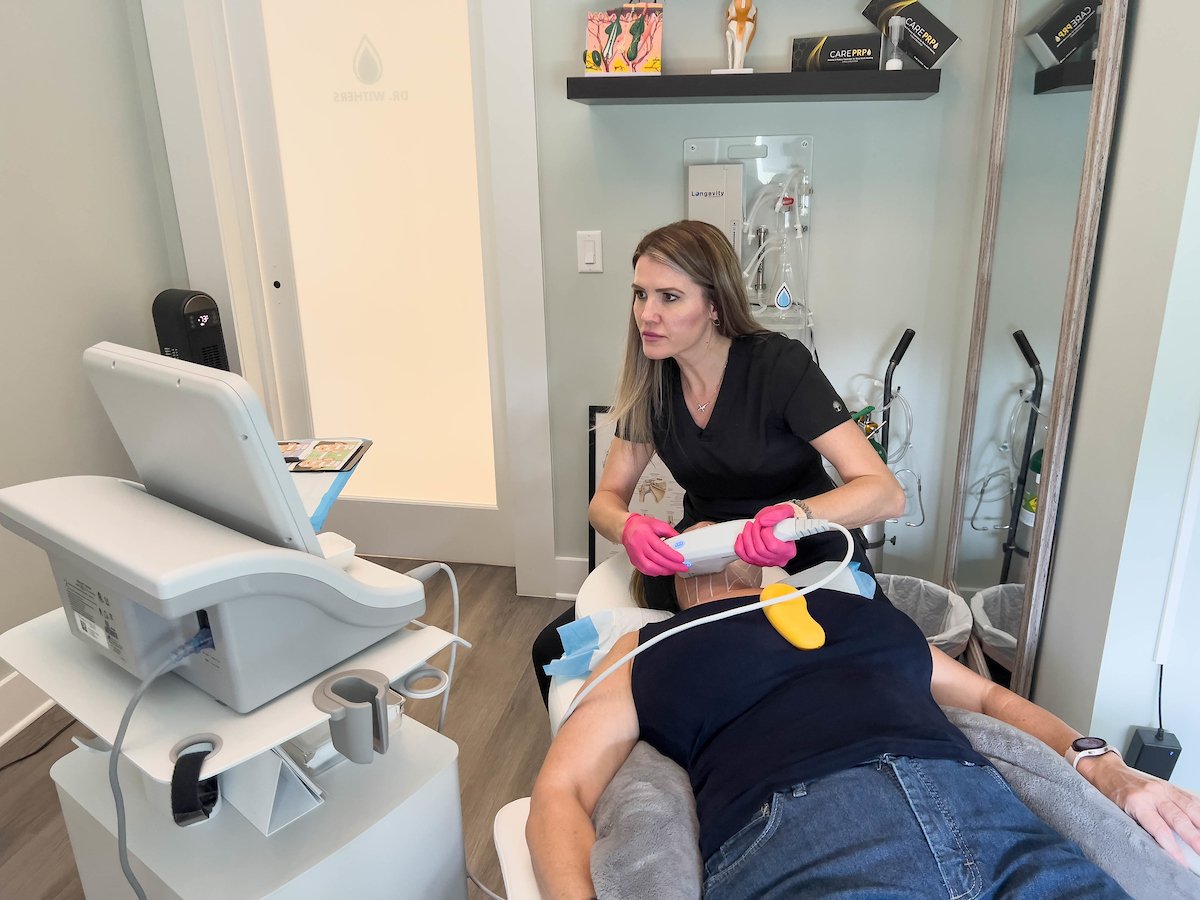Ultherapy FAQ
If you're looking for a non-invasive way to lift and rejuvenate your skin, Ultherapy might be the answer. This FDA-cleared treatment utilizes microfocused ultrasound to stimulate collagen and elastin production, leading to natural-looking results without the need for surgery or downtime. To help you better understand this innovative procedure, we've put together a list of frequently asked questions.
What is Ultherapy?
Ultherapy is the only FDA-cleared non-invasive treatment for lifting the skin on the neck, chin, and brow, as well as improving lines and wrinkles on the décolletage (chest). It harnesses microfocused ultrasound to kickstart your body's collagen and elastin production, ultimately achieving a more youthful appearance.
How do collagen and elastin function?
Collagen is a natural protein responsible for maintaining skin firmness and tone. As we age, collagen breaks down, leading to a loss of skin strength and elasticity. Elastin, on the other hand, contributes to skin resilience, preventing sagging and maintaining a firm look. Ultherapy creates a thermal effect beneath the skin's surface, prompting the body to generate fresh collagen and elastin.
How is Ultherapy different from other cosmetic procedures?
Ultherapy stands out as a non-invasive cosmetic procedure that utilizes ultrasound technology to stimulate new collagen formation deep within the skin. Results gradually become more apparent over two to three months and can continue to improve for up to six months. The treatment typically takes between 30 to 90 minutes, depending on the treated area, and requires no downtime. Ultrasound imaging ensures precise energy deposition for optimal results.
Can Ultherapy replace a facelift?
While Ultherapy targets the deep foundational layer addressed in surgical facelifts, it won't replicate the results of surgery. It's ideal for individuals with mild to moderate skin laxity, providing a great alternative for those who aren't ready for surgery.
Is Ultherapy effective for treating "turkey neck"?
Absolutely. Ultherapy is the only FDA-cleared non-invasive treatment specifically designed to lift neck skin, effectively addressing the common signs of aging associated with the "turkey neck" appearance. It offers a fresher look without the need for surgery or downtime.
Who is a suitable candidate for Ultherapy?
Ideal candidates for Ultherapy are individuals with some degree of skin laxity, experiencing a less firm appearance. Loose skin under the neck and chin, as well as lines and wrinkles on the chest, are indicators that you may benefit from Ultherapy. Typically, those in their 30s and older with mild to moderate skin laxity are the best candidates. It's also an excellent choice for those seeking facial lifting without surgery.
How long do Ultherapy results last?
Results vary depending on the individual, as the procedure stimulates the body's collagen production. Typically, results appear over two to three months and can last up to a year or more. Future touch-up treatments can help maintain results based on individual aging processes.
What does the Ultherapy treatment feel like?
During the treatment, you may feel slight energy deposits at precise depths beneath the skin. Comfort levels vary, with some patients reporting pinching sensations and heat. Cooling gel can be applied to alleviate discomfort, and additional options are available to ensure your comfort during the procedure.
Are there any side effects?
Minor redness may occur, usually resolving within hours after treatment. Some patients may experience temporary swelling, tingling, or tenderness, but these are mild and short-lived. Side effects depend on the customized treatment plan.
Is there any downtime with Ultherapy?
There is no downtime with Ultherapy. After your procedure, you can immediately resume your regular activities without any post-treatment restrictions.
How many treatments are needed?
Most patients require only one treatment session, but some may benefit from multiple sessions, depending on their level of skin laxity and individual response to the treatment. Annual follow-up sessions can help maintain results alongside proper skincare.
How much does Ultherapy cost?
The cost of Ultherapy can vary depending on the treated areas, geographic location, and the physician's practice. Treatment plans are customized to meet each patient's needs, and precise pricing can be discussed during an initial consultation with the provider.
In conclusion, Ultherapy offers a non-invasive solution for achieving firmer, more youthful skin. If you have further questions or wish to explore Ultherapy as an option, contact us for a consultation.




